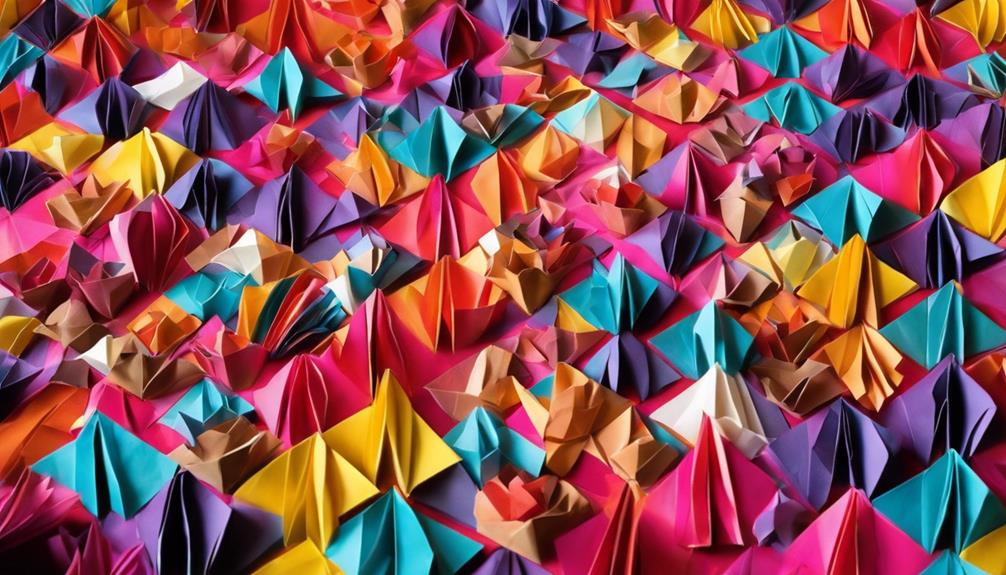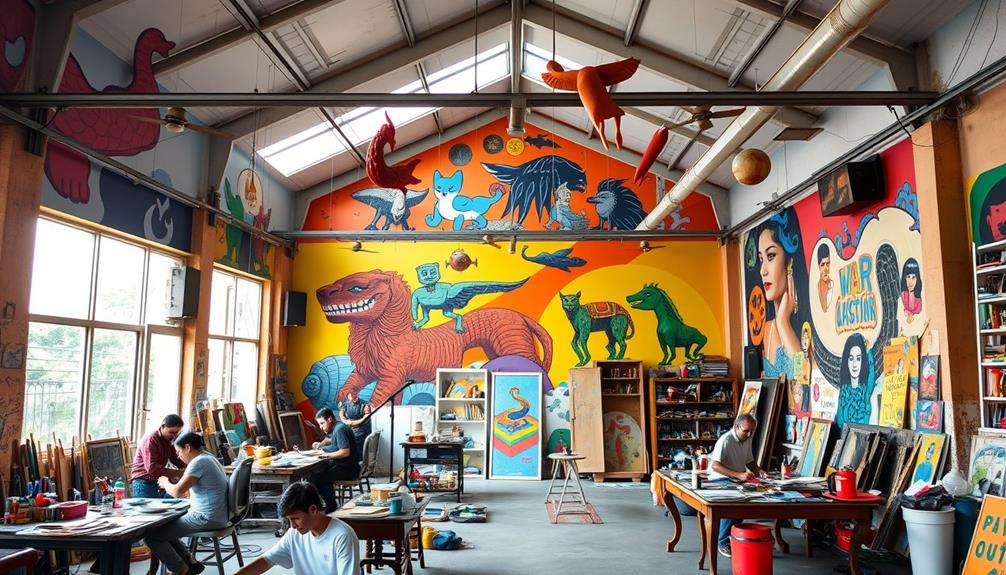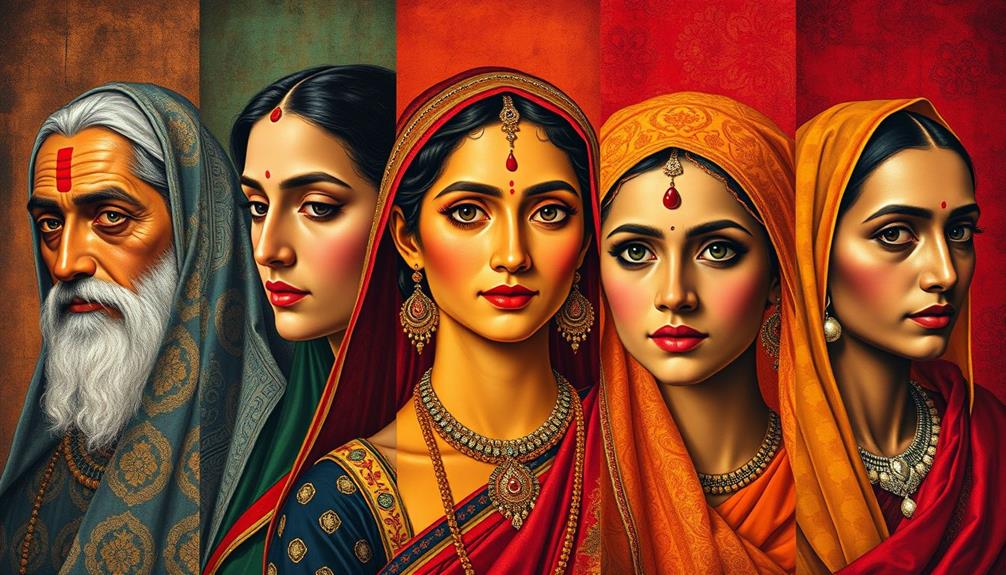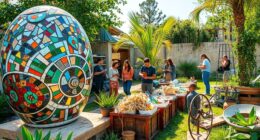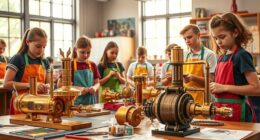The global sensation known as Charlotte SHOUT has indeed captured the attention of the art world, drawing an impressive crowd of nearly 650,000 attendees over a span of 17 days. This event has truly taken the artistic scene by storm with its diverse range of activities, including local artist showcases, interactive installations, culinary experiences, engaging live music performances, and a powerful social media presence that has sparked enthusiastic engagement. This fun art event has not only garnered widespread acclaim but has also become a pinnacle in celebrating creativity and community engagement on an international scale. More insights await for those intrigued by this artistic phenomenon.
Key Takeaways
- Nearly 650,000 attendees celebrated diverse arts.
- Social media buzz amplified global reach.
- Local creativity showcased through immersive experiences.
- Community building and celebration through art.
- Memorable attractions like the Pirate Ship and Giant Easter Eggs.
Event Overview
Attracted a staggering number of nearly 650,000 attendees over 17 days and nights, offering a vibrant array of activities, performances, and art installations. Live music filled the air as local artists showcased their talents through engaging performances. The event not only celebrated the arts but also provided a platform for local artists to share their creativity with the community.
Art installations dotted the festival grounds, showcasing the diverse and innovative works of talented individuals. These installations added an interactive and visually stimulating element to the event, engaging attendees of all ages. Local artists played a significant role in bringing these installations to life, infusing the festival with a sense of community and creativity.
Art Workshops and Installations

The art workshops and installations at the event provide hands-on creative experiences for attendees of all ages. Every time the art fair takes place, participants have the opportunity to engage in various activities such as community mural painting, art scavenger hunts, and interactive installations. These workshops cater to family and friends, offering a chance for everyone to immerse themselves in artistic expression.
Local artists lead these creative sessions, guiding participants through the process and providing a platform for artistic exploration. Additionally, attendees can create and take home art pieces, fostering enjoyment and creativity.
The event features curated art installations that encourage participation and showcase the talent of local artists. Overall, the art workshops and installations at the event offer a unique and interactive experience for individuals of all ages, promoting a love for art and creativity in a fun and engaging manner.
Culinary Delights

Attendees of the art event were treated to a delectable array of culinary delights, showcasing the vibrant and diverse food scene of the city. The Charlotte SHOUT! event featured a Charlotte StrEATs Tasting Tour, offering neighborhood-inspired cuisines from local restaurant pop-ups. Craft cocktails, live cooking demos, and a book signing by Chef Aarón Sánchez enriched the food festival experience during Charlotte SHOUT!.
The annual Neighborhood Cook-Off and curated artisan market further elevated the culinary offerings, adding a flavorful and vibrant touch to the event. Food enthusiasts savored the opportunity to sample a variety of dishes, immersing themselves in the diverse culinary scene of Charlotte through the event's food-focused activities.
Culinary delights were certainly a highlight, offering attendees a fusion of flavors, interactive experiences, and unique dining opportunities. The event successfully celebrated the city's gastronomic diversity, providing a platform for local chefs and food vendors to shine.
Live Music Performances

Music enthusiasts at the fun art event are treated to a diverse range of live performances spanning various genres and showcasing both local talent and special guest artists. Attendees can enjoy a dynamic musical experience featuring local bands, solo performers, and established musicians alongside up-and-coming talent. The music lineup caters to a wide audience with genres ranging from jazz and blues to pop and rock, ensuring there is something for everyone to enjoy. These live music sets not only entertain but also contribute to the vibrant atmosphere of the event, creating memorable moments for all participants.
| Live Music Performances | Highlights |
|---|---|
| Diverse range of genres | Jazz, blues, pop, rock |
| Featured artists | Local bands, solo performers, special guests |
| Audience appeal | Wide range of musical tastes catered to |
| Atmosphere | Energetic and engaging sets |
Social Media Buzz

The art event has sparked a viral wave of excitement across various social media platforms, captivating a global audience with its unique installations and performances. Attendees are actively sharing their firsthand experiences through engaging photos and videos, fueling online discussions and interactions that amplify the event's reach.
Social media influencers and artists are leveraging their platforms to promote the event, propelling its visibility and engagement to new heights.
Viral Social Media
Social media played a significant role in amplifying the excitement and reach of the Charlotte SHOUT! event, contributing to its widespread popularity. Platforms like Instagram, Facebook, and Twitter were abuzz with posts from attendees sharing their experiences, photos, and videos, which generated a viral social media buzz around the event. This online activity not only helped to engage a broader audience beyond the physical attendees but also created a sense of FOMO (fear of missing out) that further fueled interest in the festival.
Hashtags specific to the event trended locally, nationally, and even internationally, showcasing the diverse range of activities, performances, and art installations featured at Charlotte SHOUT! Social media served as a virtual window into the vibrant and dynamic atmosphere of the festival, highlighting the local creativity on display in Uptown zones, pop-up markets, food trucks, live music, and various events.
Global Online Excitement
Amidst the digital landscape, a whirlwind of global online excitement surrounds the fun art event, igniting a vibrant social media buzz. Thousands of posts and shares have amplified the event's reach across various online platforms, fostering a sense of community among art enthusiasts worldwide. Fans from diverse backgrounds are actively engaging with the event through likes, comments, and shares, contributing to its growing popularity.
Influencers and artists have jumped on board, enriching the online conversation and further enhancing the event's global appeal. The event's strong online presence isn't only increasing its visibility but also broadening its audience, attracting a wide array of individuals passionate about art.
As the excitement continues to ripple through the digital sphere, the event's virtual footprint expands, solidifying its status as a must-attend for those seeking creative inspiration and connection in a digital age.
Global Artistic Showcase
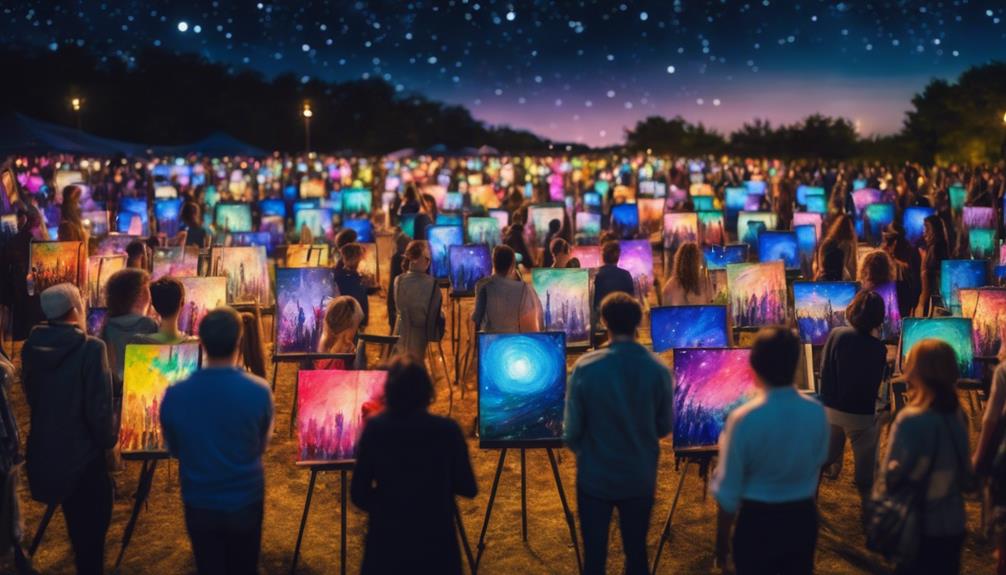
The global artistic showcase at the event presents a wide array of diverse artistic expressions, showcasing the cultural impact and reach of art across borders. With over 600 artworks displayed, the former women's prison in Rome provides a unique backdrop for this international gathering of creativity.
From the return of stolen Italian art to the mesmerizing focus on dots by Yayoi Kusama, this showcase celebrates the global influence of art in a compelling and inclusive manner.
Diverse Artistic Expressions
Art enthusiasts can immerse themselves in a kaleidoscope of artistic styles and cultural influences at the global artistic showcase featuring artworks from over 50 countries.
This event serves as a platform for a diverse range of artistic expressions, showcasing a fusion of traditional techniques and contemporary innovations.
Visitors can expect to encounter a wide array of art forms, from intricate paintings to immersive installations, each representing the unique perspectives of artists worldwide.
Renowned figures in the art world, alongside emerging talents, contribute to the vibrant and eclectic display, offering a glimpse into the global artistic landscape.
The showcase provides a rare opportunity for attendees to explore the rich tapestry of artistic diversity in one centralized location, fostering cross-cultural appreciation and understanding.
Cultural Impact and Reach
Celebrating global creativity, the artistic showcase known as Charlotte SHOUT! garnered widespread attention and engagement, attracting nearly 650,000 attendees over 17 days and nights. The event showcased a diverse array of activities, performances, and art installations, emphasizing local creativity through Uptown zones, pop-up markets, food trucks, and live music.
Leveraging social media, SHOUT! considerably expanded its reach, drawing in a varied audience from around the world and amplifying its cultural impact. Attendees of all ages participated in hands-on workshops, community mural painting, art scavenger hunts, and interactive installations, fostering creativity and engagement.
Memorable attractions in SHOUT! Zone 5, such as the Pirate Ship, Jellies, Sonic Runway, and Giant Easter Eggs, provided a vibrant and immersive artistic experience. Through its broad cultural reach and diverse offerings, Charlotte SHOUT! has successfully positioned itself as a leading global art event, uniting communities and celebrating creativity on an international scale.
Frequently Asked Questions
What Is the Famous Disaster Painting?
The famous disaster painting referenced is 'Invasion of Ukraine' by artist Andres. Inspired by Picasso's anti-war piece, Guernica, this artwork aims to raise funds for humanitarian aid in Ukraine.
Prints were sold on Andres' website, with proceeds donated to a nonprofit supporting the cause. This initiative reflects Andres' use of art to support meaningful causes and make a positive impact, showcasing both his talent and compassion.
What Is an Art Event Called?
An art event is commonly known as an exhibition, art fair, showcase, festival, or art show. These terms are used interchangeably to refer to gatherings where artists and galleries display and sell their creations to the public.
Each term may emphasize different aspects of the event, such as highlighting a single artist or group of artists, featuring a variety of artistic expressions, or providing a platform for artists to exhibit their work to a broader audience.
What Is the Art That Tells the Story of a Real Life Event?
Art that tells the story of a real-life event is known as narrative art. This form of visual storytelling captures the essence and emotions of historical or contemporary events through artistic expression.
Artists utilize symbolism, colors, and composition to convey the significance and impact of the event they're portraying. Narrative art aims to raise awareness, provoke thought, and evoke strong emotional responses from viewers while documenting, commemorating, or shedding light on important events in our world.
Who Is the 11-Year-Old Famous Artist?
The 11-year-old famous artist is Andres, known for his remarkable success in the art world. Andres has sold paintings for $1.3 million at Art Miami and has garnered prices up to $125,000 at his solo exhibition.
Remarkably, he created a piece titled 'Invasion of Ukraine' to support humanitarian efforts. Despite his fame, Andres remains a grounded fifth-grader juggling art and childhood, admired by Hollywood celebrities like Diane Keaton and Channing Tatum.
Conclusion
Don't miss out on this exciting art event that's sweeping the globe!
With workshops, installations, culinary delights, live music, and a global artistic showcase, there's something for everyone to enjoy.
Get ready to be inspired and amazed by the creativity and talent on display.
This event is truly a feast for the senses, so come join the fun and experience the magic of art in a whole new way.
